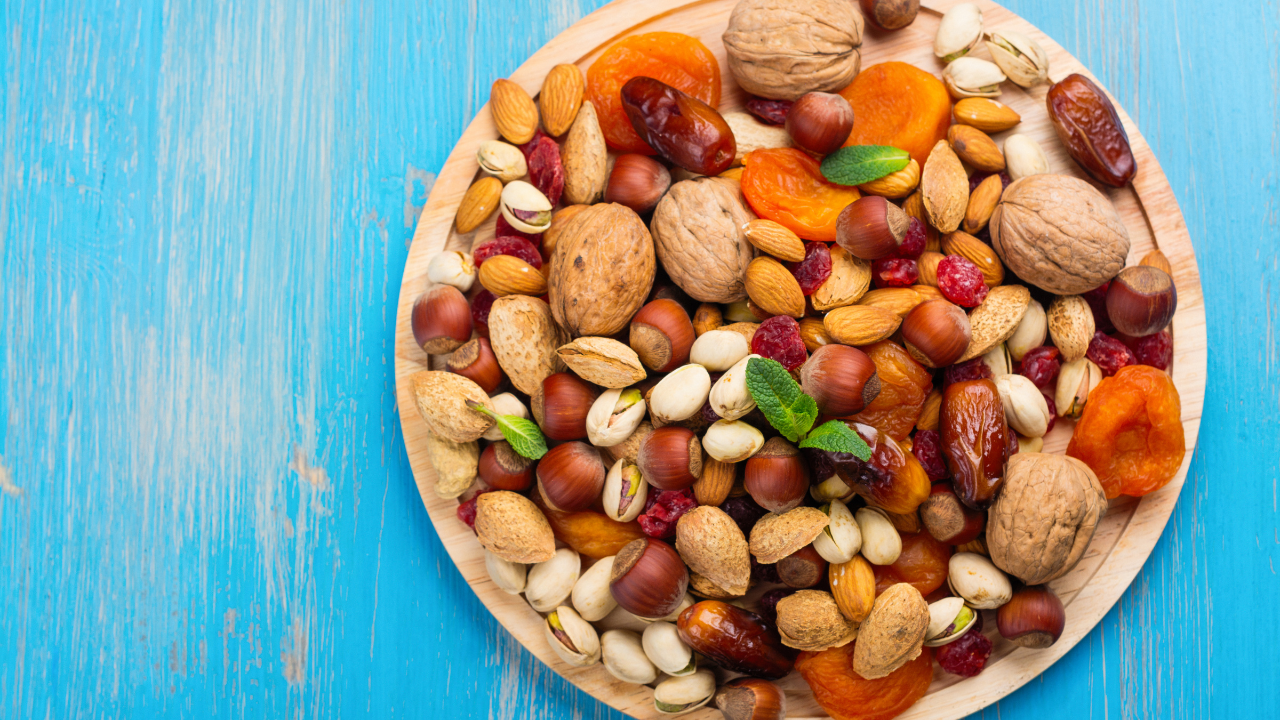The hunt for one of the world’s most precious plants begins at the base of a mountain covered in dense brush, concealing the treasure that — with any luck — lies somewhere up the slope.
Today, it’s Pablo Santiago Martínez, armed with his machete, preparing to whack his way through the vegetation of central Oaxaca. He’s 50, his back bent by years of hard physical labor.
Map of Oaxaca region in Mexico
Santiago has been cutting down wild agave since he was 7, when the succulents grew like weeds across the Oaxacan countryside. Then the outside world discovered mezcal, the spirit distilled from agave that has been produced here for at least 400 years.
On this particular day, like so many others, Santiago led a horse up the side of the mountain, swung his blade and loaded the animal with the first haul of the day. As the horse traipsed through the brush, the smell of the cut plants was sweet, vegetal, unmistakable: These agaves were ready to be distilled.
Unlike almost every other drink — whiskey, tequila, vodka — some of the world’s best mezcals are made from wild plants. But as demand rises — it surged 700 percent between 2015 and 2022, according to Mexico’s mezcal regulatory commission — harvesting the increasingly scarce specimens is a growing challenge.

Pablo Santiago, whose family makes Mezcal Los Ocotales, cuts a wild Marmorata agave commonly known as tepeztate.

The tepeztate is in great commercial demand but its maturation period is the longest of all the species of agaves mezcaleros — between 25 and 35 years in the wild.
Agaves are Daliesque, prehistoric looking things, with thick, thorny branches splayed in all directions. The belly of the plant — the piña — looks, indeed, like a giant pineapple. When mature, it weighs as much as 300 pounds.
For almost their entire lives, agaves are monochromatic and serpentine, as dry as the steppe on which they grow. But after 25 to 30 years, the plant suddenly shoots a flower toward the sky, a towering, bright yellow steeple, the loudest flash of color for miles.
The anatomy of the agave plant.
In the Nahuatl language, the word mezcal means “cooked agave.”

Arroqueños (Agave americana var. Oaxacensis), which grows to 10 feet tall, can take 20 to 30 years to mature. It’s known for producing mezcals with complex flavors — often mildly smoky, with notes of fruit and spice.

Tobala (Agave potatorum or Agave seemanniana), a relatively small agave, prefers rocky soil at high altitudes, making it challenging to harvest. This “king of mezcals” produces a sweeter spirit, with floral, tropical and citrus fruit flavors.
The growing global market for mezcal has spurred a wild agave rush. Some species have effectively vanished. Harvesters now keep word of mature varietals — a few arroqueños hidden away in remote hills, a couple of tobala slung over a deep ravine — a closely held secret.
“The populations are disappearing little by little since they cannot regenerate adequately,” said Daniel Quezada Daniel, executive director of Mexico’s National Commission for Biodiversity. “Their scarcity leads to increased prices, and perversely leads to even further exploitation.”
Demand for mezcal, now a signifier of cool, has led American companies to buy land and distilleries in Oaxaca. Some have scoured the mountains and hills clean of wild agaves and seeded large plantations of espadin, the easiest agave to cultivate and the fastest to flower.
Those plantations are now producing some of the cheapest and — in many cases — least interesting mezcal.
But a small number of mezcaleros continue to work with wild agaves. They trek into the mountains, deeper each year as the plants get harder to find. Some are attempting to reforest the hill country — they collect seeds of endangered plants and scatter them in the wild. Others have launched efforts, still inconclusive, to domesticate wild varietals, which they are dubbing “semi-cultivated.”
Still others are fatalistic.
Foreign mezcal drinkers have adopted a taste for the wildest, scarcest agaves.
Back then, he didn’t know the word reforestation. He wasn’t thinking about creating an agave reserve.
It was a sentimental thing: When a plant takes more than two decades to grow, it’s as much a way to mark time as it is a source of sustenance.
He made his way to Indiana, where he worked at a Lowe’s warehouse. In California, he worked at a burger restaurant.
He always knew he would come back to Oaxaca. What he didn’t expect was his son’s pitch.
“I told him, ‘We should make our own mezcal brand,” said Samuel Santiago, now 31.
The younger Santiago had studied business at the University of Oaxaca, funded with money his father sent from the United States. He presented ideas for how to market their mezcal and how to attract tourists to their palenque. He even had a name: Los Ocotales.
By then, much in the trade had changed. Sophisticated consumers abroad now distinguished among mezcals made from different agaves. They favored the rarest and wildest ones. And the agaves themselves were getting harder to find.
Researchers at the Autonomous University of Mexico last year found that at least eight of the wild agaves that are used to produce mezcal, including tepeztate, were in decline.
“The main and most worrying threat is the growing demand for mezcal,” researcher Ignacio Torres-Garcia wrote.
The mezcal boom built on wild agaves, he wrote, has failed to protect those plant populations “in a manner that would allow for regeneration.”
Pablo Santiago agreed to his son’s idea, reluctantly. But they built into their proposal a way they thought could preserve the threatened agave species. They weren’t entirely sure it would work.
The family leased a swath of farmland and, just as Santiago had decades earlier, scattered thousands of seeds across it.
It was the first step in the process of making their mezcal.
Making mezcal
The type of agave that’s used has a significant impact on the flavor profile of the mezcal. So does the process by which it’s produced.

Making mezcal
The type of agave that’s used has a significant impact on the flavor profile of the mezcal. So does the process by which it’s produced.

Cooking
Cooking breaks the starches in the piñas down to simple sugars.
Typically, the piñas are roasted by wood fires in earthen or stone-lined pits. But some mezacaleros use aboveground ovens or autoclaves. Each method and heat source — the species of wood burned, for example — imparts different aromas and flavors to the mezcal.

Milling
Milling extracts the juices from the cooked piñas, making the sugars more accessible to the yeast and bacteria microorganisms that aid fermentation.
Some mezcaleros pulverize the piñas by hand, using mallets. Others crush them with a large stone wheel pulled by an animal or powered by electricity or gas. Still others use trapiche mills, wood chippers or hydraulic presses.


Fermentation
The milled juices and fibrous pulp are poured into large vats, traditionally made of wood or stone. Water is added and the mixture is left to ferment.
Yeast and bacteria metabolize the sugars, producing alcohol, carbon dioxide and other chemical compounds that provide flavor and aroma.
Many mezcaleros use open-air vats that allow native microorganisms to access the agave. Commercially cultivated yeast provides more consistency, but the resulting mezcal can lack the unique flavor that a diversity of local, natural yeasts can provide.
The time fermentation takes depends on air temperature, altitude, humidity, the agave’s sugar content and other factors.


Distillation
Each distillation takes about 2 hours
Once fermented, the mixture is moved to a clay or copper still and heated by wood fires or natural gas.
It’s the norm in Oaxaca to distill mezcal twice.
As the temperature rises, liquid evaporate and cools in the still’s tubes or coils. The condensed liquid is extracted. Compounds that evaporate at lower temperatures, such as ethanol, are discarded. The desirable mezcal alcohol flows.
If the mixture is heated for too long, liquids such as methanol and undesirable oils start to collect.
The legends are many. In one, mezcal flowed from the breasts of the Zapotec goddess Máyatl. In another, a goddess was herself turned into an agave plant. Some believe the drink was discovered when lightning struck an agave. In another legend, an opossum steals mezcal from a gang of demons and gifts it to mankind.
Now, new legends are circulating in New York and Tokyo and London and on internet message boards. Much modern mezcal lore is subjective, a reflection of the drinker’s experience: the way it makes you feel after a few glasses, the game it plays on the tongue, the perceived connection between the drinker and the plant.

Espadin (Agave angustifolia Haw. var. angustifolia), a cultivated species, has a high sugar content and matures rapidly — seven to nine years — making it the workhorse of mezcal agaves. Espadin generally balances herbal notes, sweetness, citrus, and smokiness.
“It’s hard to believe all these flavors can be coaxed from the same variety of agave,” Kara Newman wrote in Wine Enthusiast.
Mezcal is now ubiquitous in cocktails served around the world: the mezcal negroni, the mezcal margarita, the mezcal mule. The city of Oaxaca overflows with mezcal bars, mezcal pub crawls, mezcal palenque tours. Even in southern Mexico, the phenomenon goes by its English name: El boom de mezcal.
Much of that boom is in espadín, an easy-to-cultivate agave that matures in seven to nine years. Now, in places such as Soledad Salinas, communities have razed entire villages to plant espadín to sell to large American mezcal producers.
But the most sought-after mezcals are made from the most sought-after agaves. They’re rare for a reason: If production continues apace, they won’t exist for long. But their rarity has so far been a draw.
“The Americans want the rarest, the most special mezcal in the world,” said Graciela Angeles, the director of the prestigious brand Real Minero. “It doesn’t matter to them what that means for the future of the agave.”

Espadin crops lay on a deforested hill. This agave is the fastest growing variety, the easiest to cultivate and the most efficient when distilled, making it a favorite for mezcal production.

Edgardo Mendoza, mayor of Soledad Salinas, shown with espadin crops.

A truck carrying espadin piñas passes by deforested hills.
The call came in to Real Minero co-owner Edgar Angeles Carreño, Graciela’s brother. A friend of a friend in the village of Agua Blanca had some barril — a thin, spiny, rare agave — that were about to flower.
“When you get that call, you go immediately,” Edgar Angeles said. “Otherwise someone else will buy it in an instant.”
The Angeles family has produced mezcal for four generations in Santa Catarina de las Minas, a mezcal mecca. They’ve watched demand, especially for the rarest varietals, soar.
The family has decided it will not try to increase production if it means depleting the wild agave population. But just continuing production of mezcal produced from uncommon plants has been a challenge. The calls announcing maturing plants have grown increasingly rare.
And so Angeles drove his red pickup deep into Oaxacan farmland. And there they were, scattered across the hills: the leaves of barril agaves shooting up through the brush. The plants take roughly 15 years to mature.

David Vazques, a local farmer, sharpens his machete to cut agaves.

Farmers usually plant agaves by the edges of their lands to use them a barrier due to their large shape, then sell them to maestros mezcaleros when they are mature enough.

Edgar Angeles weighs piñas brought by a local farmer.


















































